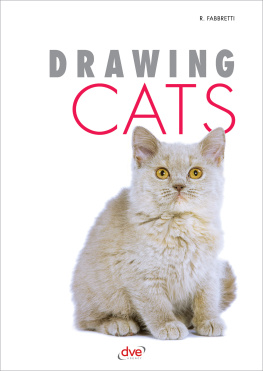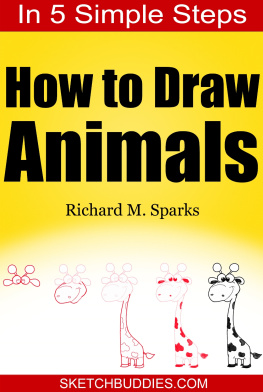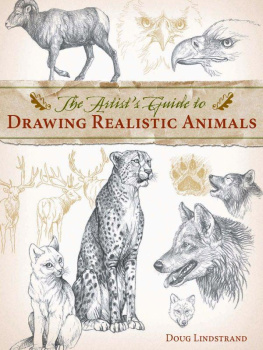R. Fabbretti
DRAWING
c a t s
EDITORIAL DE VECCHI
Despite having put the utmost care in drafting this work, the author or publisher cannot in any way be held responsible for information (formulas, recipes, techniques, etc.) expressed in the text. It is advisable, in the case of specific problems - often unique - to each reader in particular, to consult a qualified person to obtain the most accurate, complete and most up-to-date information possible. EDITORIAL DE VECCHI, U. S. A.
The publisher thanks Bhel for his collaboration.
Editorial De Vecchi, S. A. 2016
[2016] Confidential Concepts International Ltd., Ireland
Subsidiary company of Confidential Concepts Inc, USA
ISBN: 978-1-68325-162-0
All rights reserved. No part of this publication may be reproduced, stored in a retrieval system, or transmitted in any form or by any means, electronic, mechanical, photocopying or otherwise, without prior written permission of EDITORIAL DE VECCHI.
Index
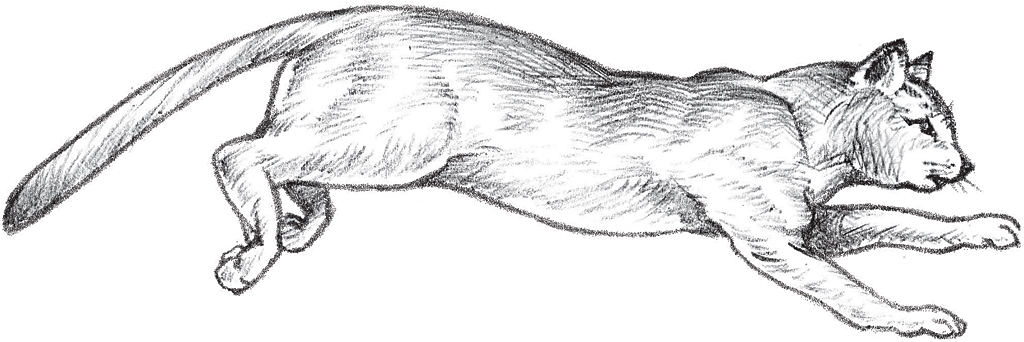
Present in the life of man from the earliest times, the cat has always fascinated with its elegance, its agility, and its aura of mystery. Throughout history, various roles have been attributed to them. Depicted as a deity in ancient Egypt, it quickly lost, with the decline of the Egyptian civilization, all the privileges from which it had benefited.
The Egyptians had imported the cat from Ethiopia, and from the 1 st century CE, it spread throughout the Mediterranean Basin thanks to traders and merchants. They were the privileged guests of vessels, which were preparing to cross the seas to unknown destinations; the cats prevented the vessels from becoming rat-infested, endangering the success of the expedition. Thanks precisely to these voyages, cats spread throughout the world.
The campaigns of the Roman conquest also helped to introduce the cat in different regions of Europe, but until the 15 th century this animal did not have the status of a pet being in charge of catching mice in rural areas, although the Chinese had domesticated themsince the year 1000 CE.
During the Renaissance, Leonardo da Vinci interrupted his studies of the Virgin and the Child Jesus to focus on cats, and from the 17 th century onwards, some paintings of the Dutch and Flemish schools included cats in the representations of domestic interiors. Painters such as Rembrandt, Veronese, Tintoretto, Manet, Renoir and Picasso are among the great artists who have represented cats in their works.
In the same way as with dogs, there are many cat breeds with quite distinct morphological characteristics. Thus, there are cats with compact structures, short legs and long hair, typical features of the Persian race, and very slender, elongated ones, with short hair, like the Siamese breed cats. The European cat also has short hair, and its fur offers numerous variants (of a single colour, tabby or spotted); the combination of patterns of its fur is almost infinite. The agility and the extraordinary flexibility of the cat allow the animal, regardless of the race, to be a great shape changer and to take the most incredible positions. The reclining cat resembles a rounded body, and when sitting, its hind legs almost disappear, hidden behind the hair of its coat. To achieve a drawing of a cat endowed with great realism, special care has to be taken in reproducing the animals volume and fur by means of subtle strokes.
SITTING CAT WITH ITS TAIL AROUND THE BODY
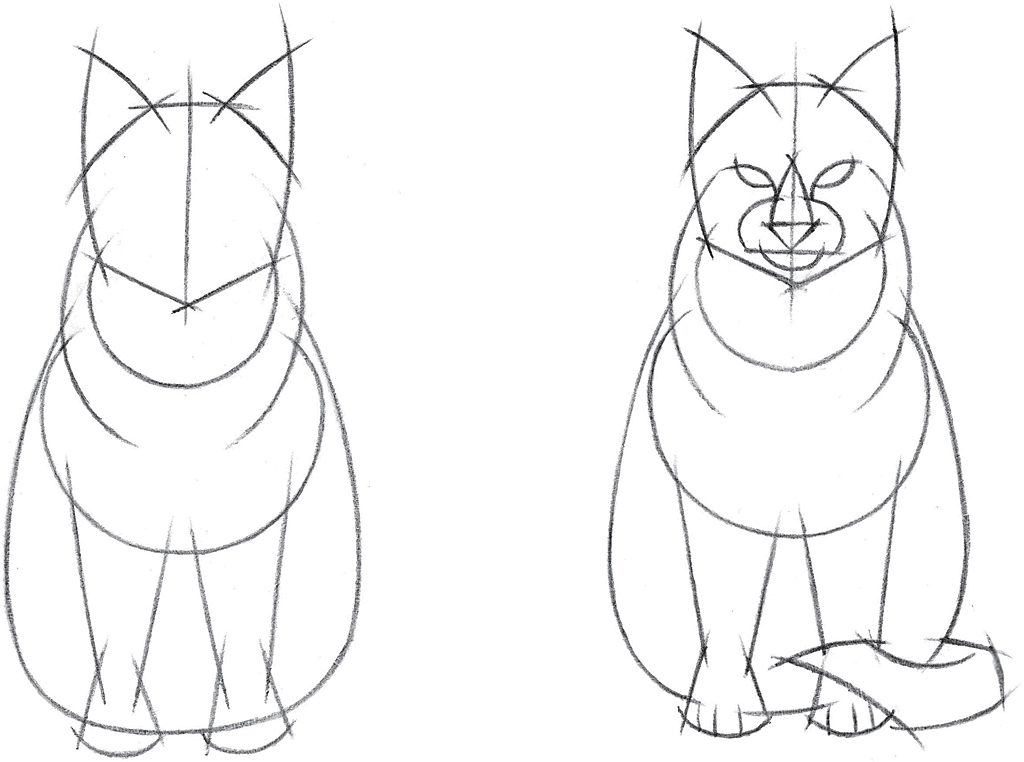
The body is formed into a vertical oval shape. The gaze must be profound.
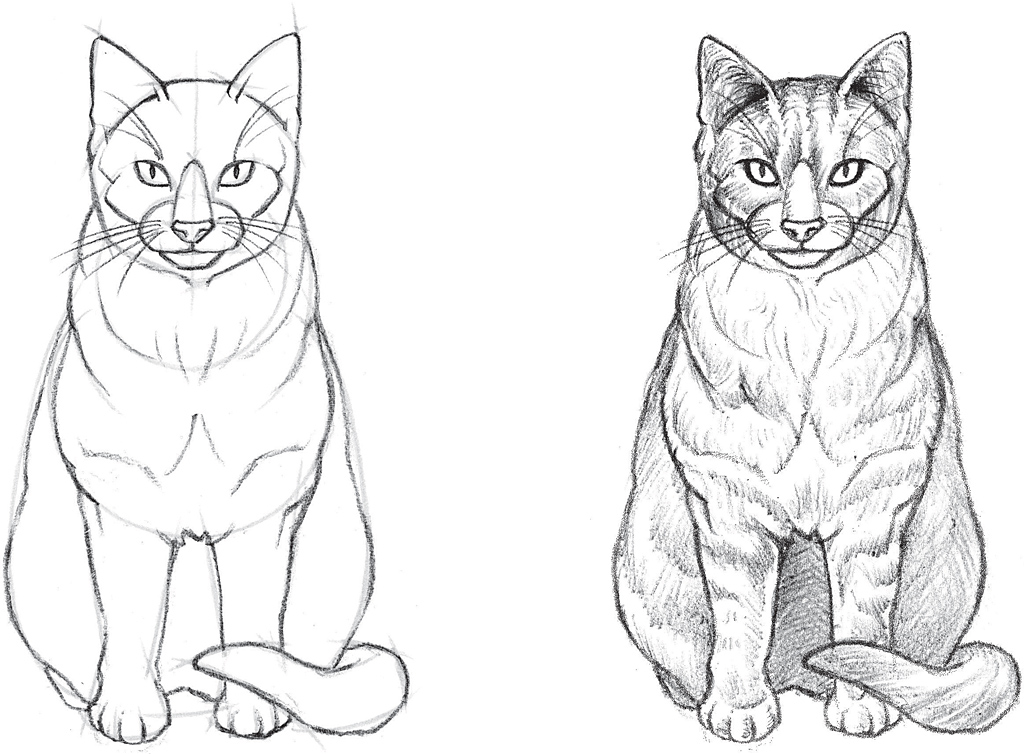
SITTING CAT IN A HALF-FRONTAL POSITION
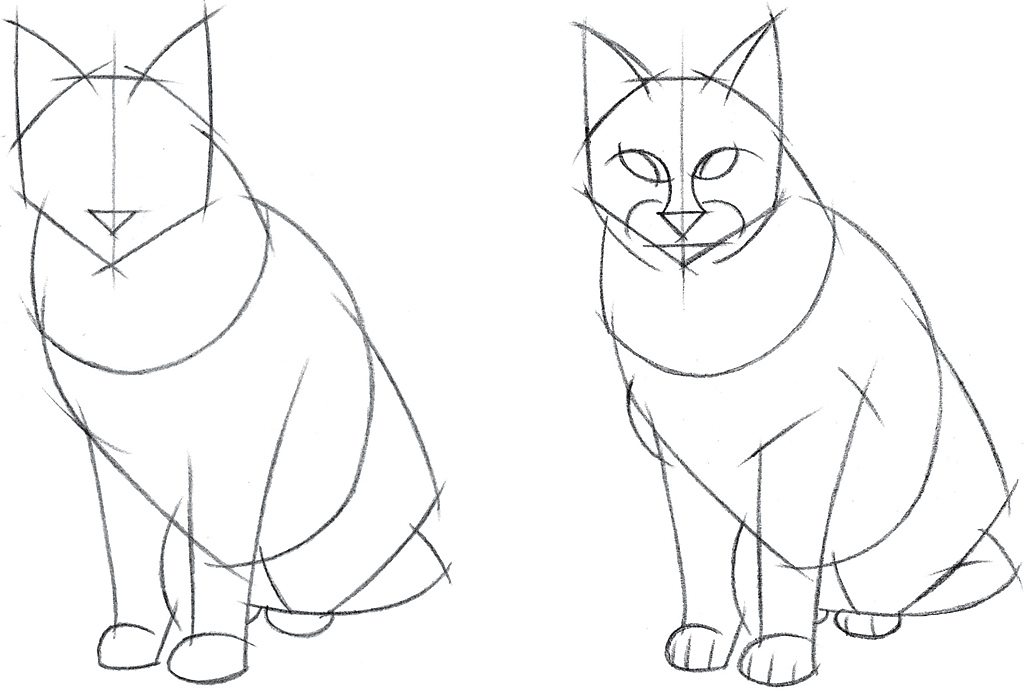
The head is square and is formed into the oval body. The whiskers and the eyebrows must be clearly visible.
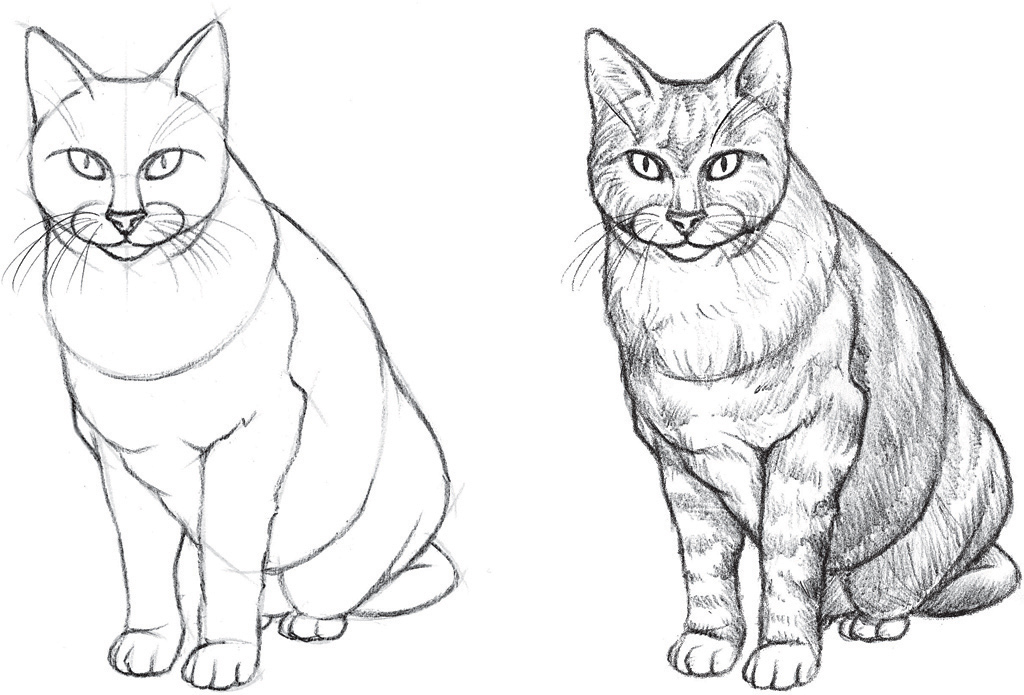
SEATED CAT
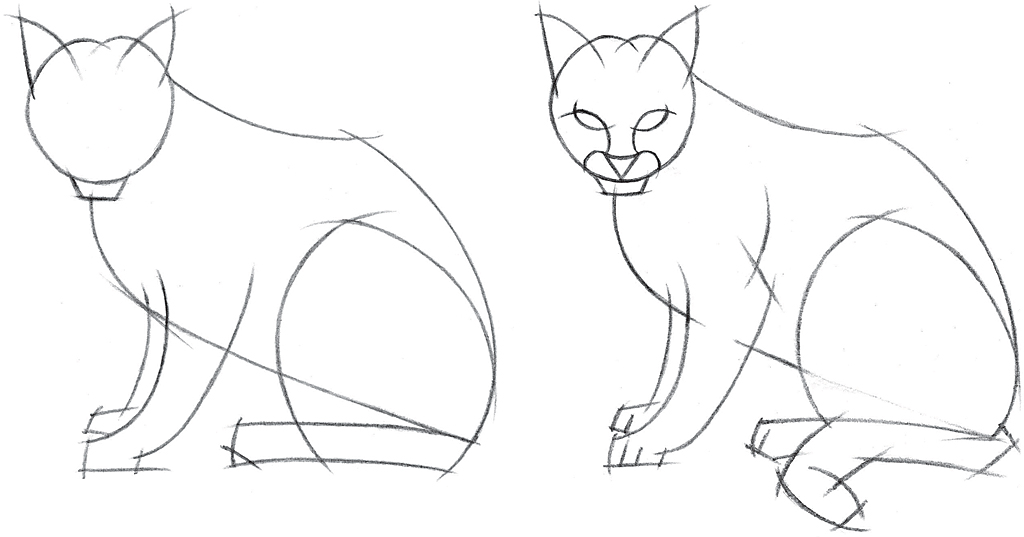
The head is round and is formed into the body, which is an elongated oval. It must reflect certain distrust.
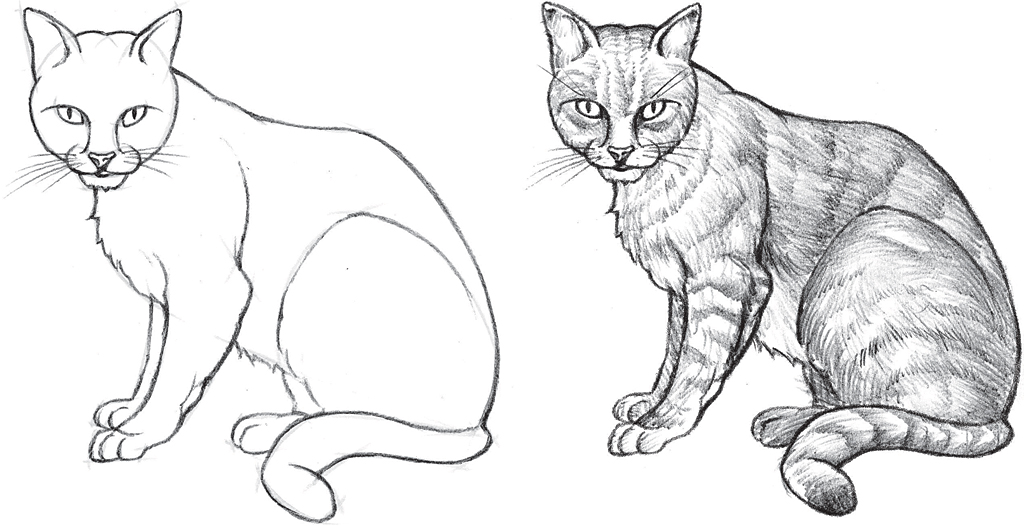
SEATED CAT BEING ATTENTIVE
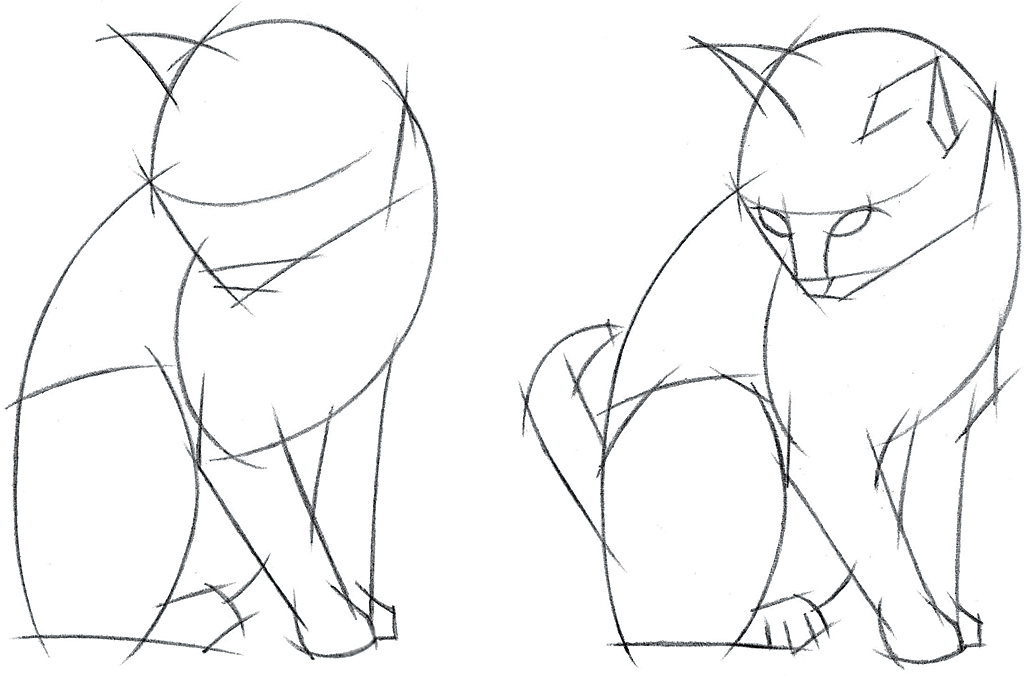
The body is formed into a vertical oval. The front legs are together. The shadows must be stressed when drawing the hair.
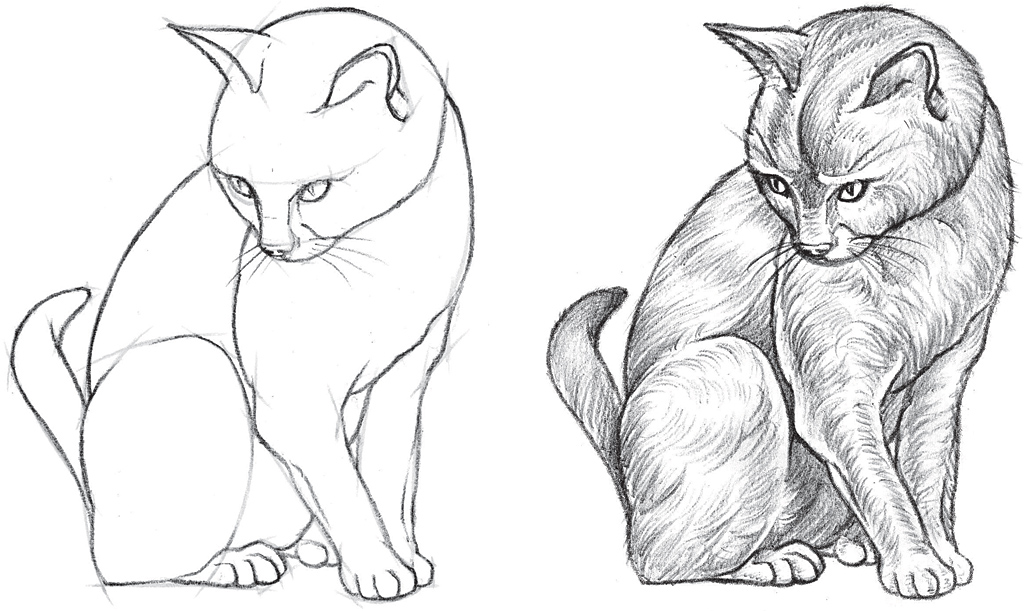
SEATED CAT TURNING
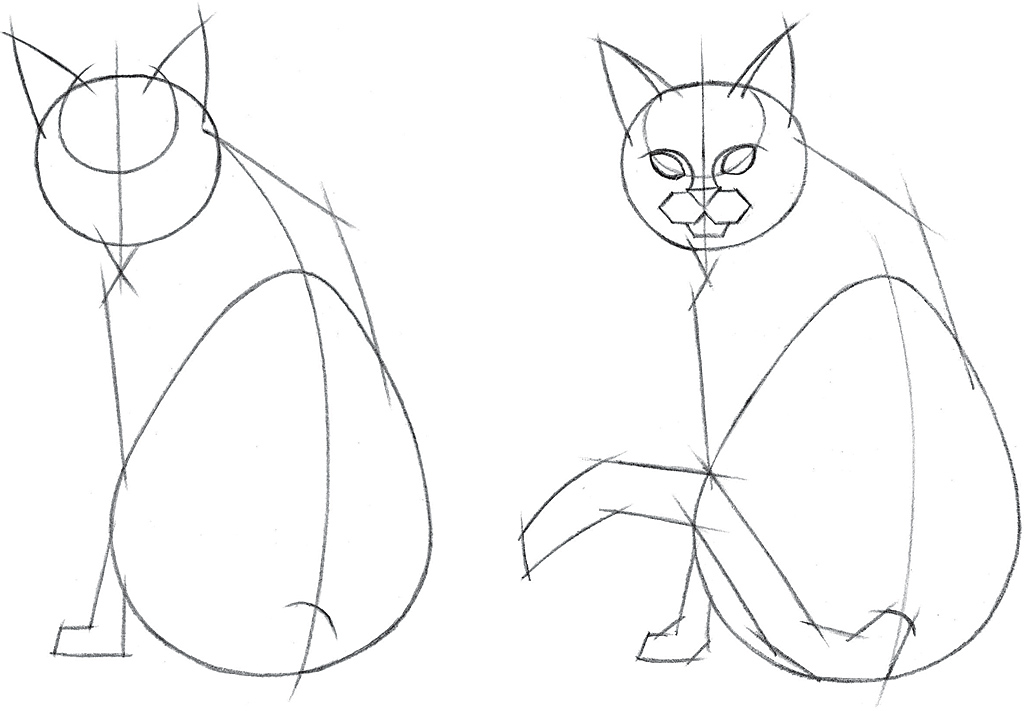
The head is formed into a circle. Its back has an oval shape, which is formed into the body. It must have an interrogative gaze.
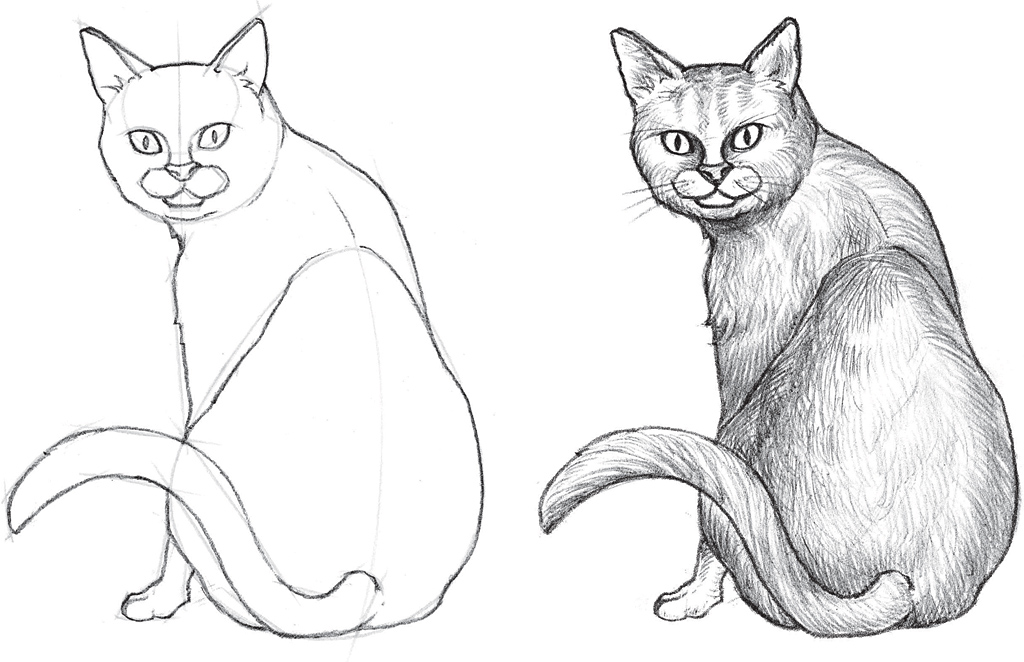
SEATED CAT LOST-SIGHTED
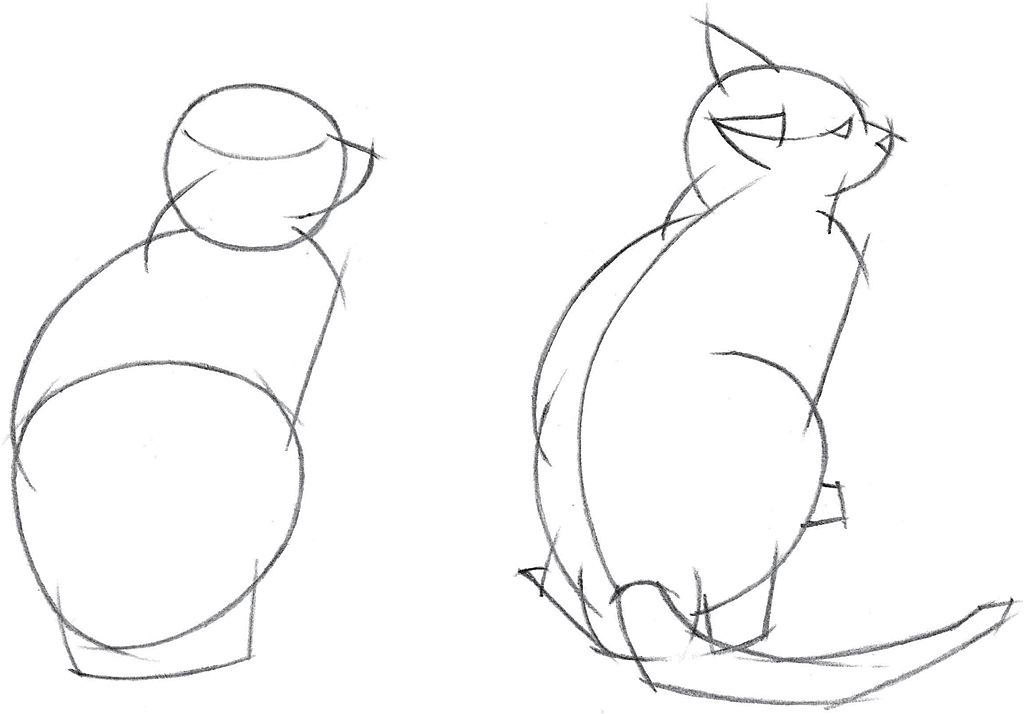
The back is very important. The spine must be clearly marked. The formation of the tail is important.
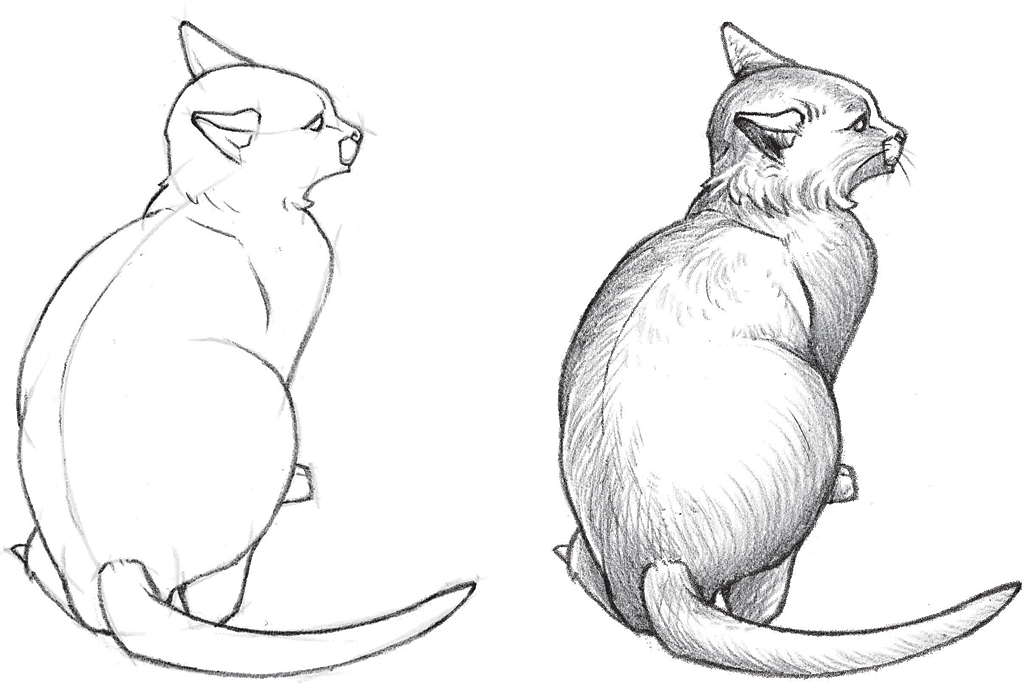
CAT FROM THE BACK
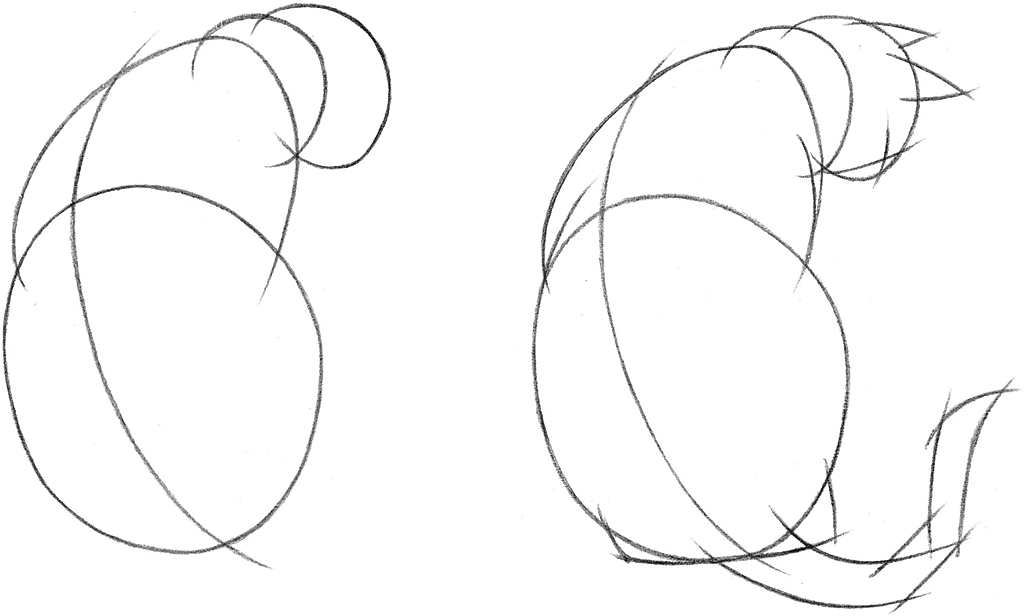
The spinal line marking the position of the cat must be stressed. The ears are an extension of the roundness of the body and of the head.
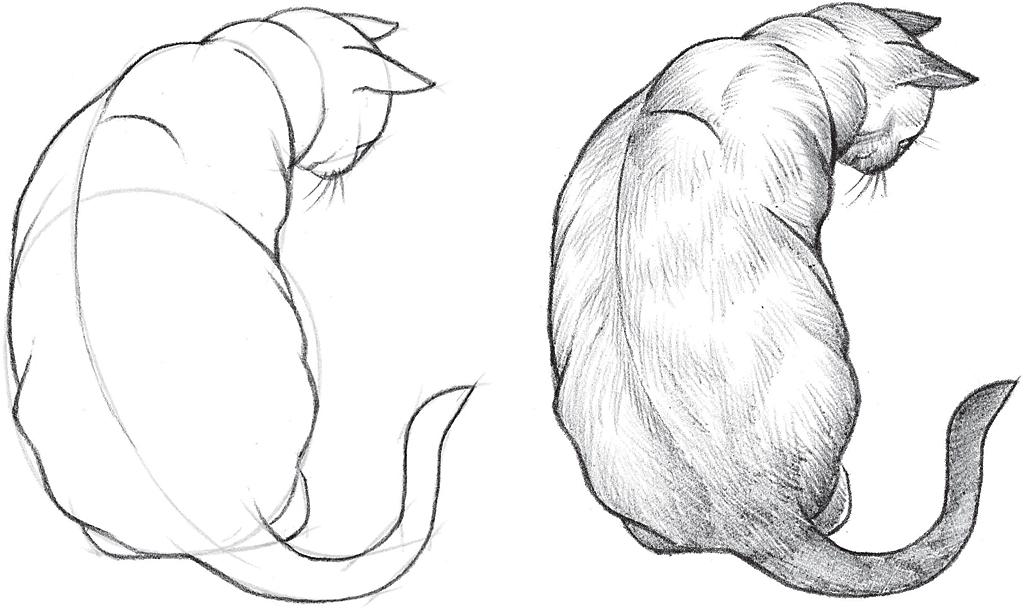
CAT BATHING
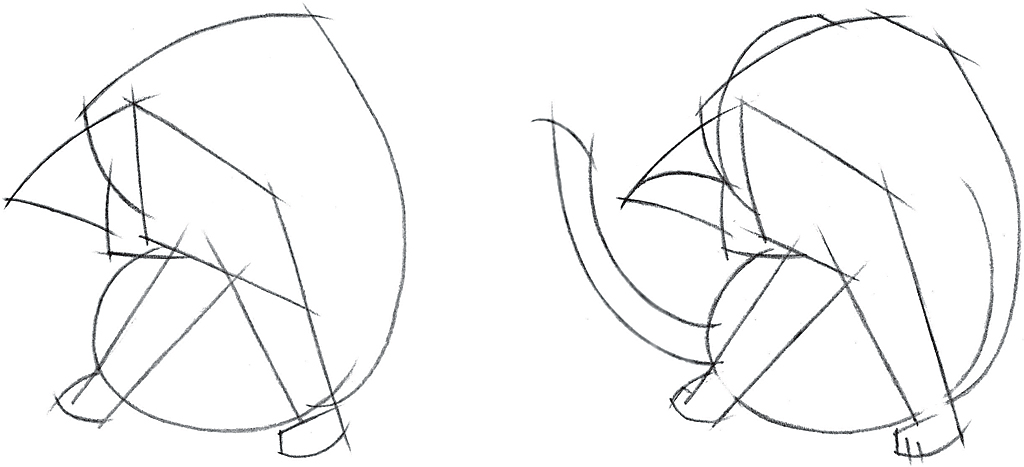
The body is formed into a circle. The ear should be well highlighted.

LYING CAT

The body is formed into an oval. The head is round. The position of the tail should be noted.

